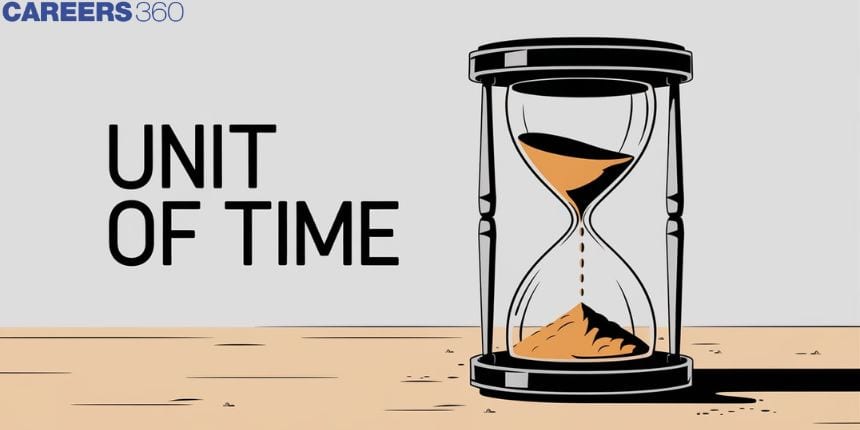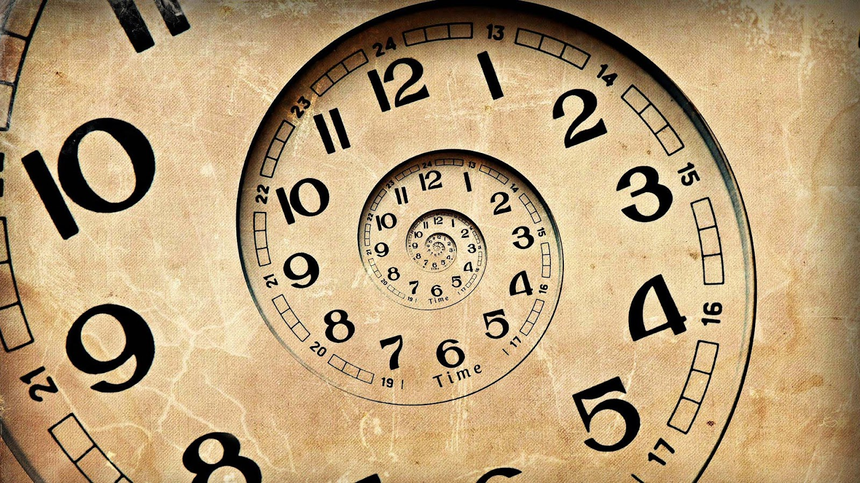Unit of Time - SI Unit, CGS Unit & Other Time Units, FAQs
We all have experienced time and have seen its amazing and phenomenon results.
So, in this article we will study and will try to find out what is time, what is unit, what is unit of time, what is the SI unit of time, what is basic unit of time, how much one second is equal to and what is standard unit of time.


First let’s discuss about,
What is time? Definition of time in simple words.
As soon as we hear the word, we think of something which is continuous in nature and makes the life easier by categorizing it in seconds, minutes, hours, days, weeks, months and years. Hence, order of life is being categorized from past events to present and then to the future events.
Also read -
- NCERT Solutions for Class 11 Physics
- NCERT Solutions for Class 12 Physics
- NCERT Solutions for All Subjects
What is unit?
There are many types of units in physics, because of a large number of independent quantities existing for measuring different physical or non - physical quantities. Length, mass and time three basic quantities which are unique and all time necessary. Therefore, they have three separate units for their system of measurement hence it is required to define system of units a system of unit is a collection of unit in which certain units are chosen as fundamental and all others are derived from them this system is called absolute system of unit in most system mass length and time are connected considered to be fundamental quantities and their units are called fundamental units the following are some system of units which are used commonly
1 . cgs system of units the unit of length is centimeter ( cm ), the unit of mass is gram ( g ) and the unit of time is second (s) .
2 . mks system of units the unit of length is meter (m) , the unit of mass is kilogram (kg) , the unit of time here also is second (s) .
3 . fps system of units here unit of length is measured in foot (ft) , the unit of mass is calculated in pound (lb) and the unit of time is seconds (s) . but this system of unit is no more in use widely used system of unit is metric system of units .
Also read :
- NCERT solutions for Class 11 Physics Chapter 1 Physical world
- NCERT notes Class 11 Physics Chapter 1 Physical world
Unit of time
There are various units of time.
As, we have already discussed about that Second, minute, hour, day, week, month and year are the terms or we can say the basic unit of time that we consider. These are time measurement units.
All these units of time can be in a relation as under:
60 seconds is equal to 1 minute and 1 minute is equal to 60 seconds .
Also,
60 minutes is equal to 1 hour and 1 hour is equal to 60 minutes .
24 hours is equal to 1 day (day and night) , 7 days is equal to 1 week
12 months is equal to 1 year , 52 weeks is equal to 1 year .
365 days or 366 days makes a year and 10 years make a decade .
50 years make half century and 100 years make a century .
These are some general units of time that we use in our daily life for making our life sort.
Related Topics Link, |
What is SI (standard unit of time) unit of time?
The basic or SI (standard unit of time) unit of time is second (SI units of other physical quantities are: metre for length, kilogram for mass, ampere for current, kelvin for calculating temperature, candela for measuring luminous intensity, and mole is considered for the amount of substance). The second can be shown as a symbol by s or sec.
As soon as this system came into existence the SI system, a second is physically in terms of science, we define time in physics in more accurate and absolute atomic concept as “the time of 9,192,631,770 periods of the radiation be consistent with the transitions between 2 levels of the ground (zero) state of the caesium 133 atom”, this definition was made even more exact with the stipulation that this means to a caesium atom at rest 0° Kelvin temperature. This is known as 1 second of time.
Some basic SI units of time chart are
For less than a second,
Deci second is equal to 1/10 second cent second is equal to 1/100 second millisecond is equal to 1/1,000 second microsecond is equal to 1/1,000,000 second
nanosecond is equal to 10-9 second
picosecond is equal to 10-12 second
femtosecond is equal to 10-15 second
attosecond is equal to 10-18 second
zeptosecond is equal to 10-21 second
yoctosecond is equal to 10-24 second
For more than a second
Deca second is equal to 10 seconds hector second is equal to 100 seconds kilo second is equal to 1,000 seconds (about 16.7 minutes) mega second = 1,000,000 seconds (about 11.6 days)
Giga second = 109 seconds (about 31.7 years)
Tera second = 1012 seconds (about 31,700 years)
Peta second = 115 seconds (about 31.7 million years)
Exa second = 1018 seconds (about 31.7 billion years)
Zetta second = 1021 seconds (about 31.7 trillion years)
Yotta second = 1024 seconds (about 31.7 quadrillion years)
Now, in this article we have understood the concept of what is time, what is unit, what is unit of time, what is the SI unit of time, what is basic unit of time, how much one second is equal to and what is standard unit of time.
Also check-
- NCERT Exemplar Class 11th Physics Solutions
- NCERT Exemplar Class 12th Physics Solutions
- NCERT Exemplar Solutions for All Subjects
NCERT Physics Notes:
Frequently Asked Questions (FAQs)
Largest unit of time is eon. Earth’s 4.6 billion year history is divided into four eons three out of the four eons are grouped together to form the pre Cambrian time.
International system of units is the best and today’s form of a metric system it is the only system of measurement with considered status in every country around the globe, there are 7 basic SI units: length, time, amount of substance, electric current, temperature luminous intensity and mass.
Zeptoseconds is the smallest unit of time. While shake is also considered as smallest unit of time but not in official status.
7 days in seconds are 604,800 and 3 days in seconds are 259200.
Five standard unit for measuring length are inches, feets, yarns, and mile in US system. millimetre, centimetres, metres, kilometres in metric unit system.